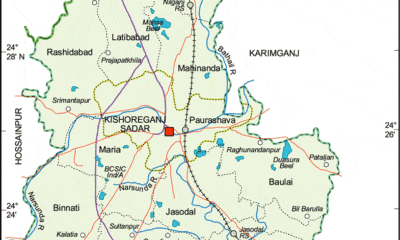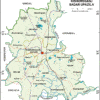Global News
Unrest in Bangladesh: Sheikh Hasina Eyes Asylum Amid Political Turmoil
In a dramatic turn of events, former Bangladeshi Prime Minister Sheikh Hasina has reportedly fled to India, seeking potential asylum in the United Kingdom. The political landscape in Bangladesh is in turmoil following her departure, as widespread protests and violence continue to shake the nation.
Sheikh Hasina’s Departure
After a tumultuous 15-year tenure, Sheikh Hasina, often referred to as the ‘Iron Lady‘ of Bangladesh, was compelled to resign and flee the country amid intensifying anti-government protests. The streets of Dhaka, previously engulfed in chaos, erupted in jubilation as news of her exit spread, marking a significant shift in the country’s political climate.
Interim Government and Army’s Role
General Waker-Uz-Zaman, the Bangladesh army chief, has announced plans to form a new interim government. Excluding the former ruling Awami League party, consultations are underway with various political factions to restore stability. General Zaman also vowed to halt the brutal crackdown that resulted in over 300 fatalities, a promise that brings a glimmer of hope to the beleaguered nation.
Hasina’s Asylum Plans
Sheikh Hasina’s current whereabouts are under tight scrutiny. Having landed at Hindon Airbase near Delhi on a military aircraft, she is reportedly awaiting clearances for onward travel to London. However, her son, Sajeeb Wazed Joy, has refuted claims of her seeking asylum, leaving her future plans shrouded in uncertainty. Meanwhile, the British Foreign Secretary David Lammy has called for an independent UN-led investigation into the violence, further complicating Hasina’s asylum prospects.
Ongoing Violence and Unrest
Despite the promise of a new government, the situation in Bangladesh remains volatile. The army’s Inter-Services Public Relations (ISPR) announced the reopening of government and private institutions, but the unrest persists. The country’s student leaders, who played a pivotal role in the protests, are set to meet with General Zaman to discuss the formation of an interim government. Their demand for Nobel Peace laureate Muhammad Yunus to lead this transitional phase underscores their desire for a significant shift from the previous regime.
Public Reaction and Protesters’ Actions
The departure of Sheikh Hasina was celebrated by many. Visuals of protesters occupying her official residence, waving flags, and raiding the premises went viral. The jubilation, however, also witnessed destructive behavior, with protesters storming the parliament building, looting, and defacing national symbols.
Political Implications and International Response
In a move that signals a potential power shift, President Mohammed Shahabuddin ordered the release of Khaleda Zia, a prominent opposition leader and former Prime Minister, just hours after Hasina’s ouster. Zia’s release from a 17-year prison sentence for corruption marks a significant moment in Bangladesh’s political narrative.
Internationally, the response has been cautious. The United States has called for a democratic and inclusive interim government while urging all parties to avoid further violence. UN Secretary-General Antonio Guterres has demanded an independent investigation into the violence, emphasizing the need for accountability.
Sheikh Hasina’s resignation marks the end of an era characterized by substantial economic growth juxtaposed with allegations of human rights abuses and political repression. As Bangladesh navigates this critical juncture, the formation of a stable interim government and the cessation of violence remain paramount. The role of the military, student leaders, and international community will be crucial in shaping the nation’s future trajectory.
As the world watches, Bangladesh stands on the brink of a new political dawn, one that promises both challenges and opportunities in equal measure.





































Pingback: Sheikh Hasina Links Muhammad Yunus To Communal Forces